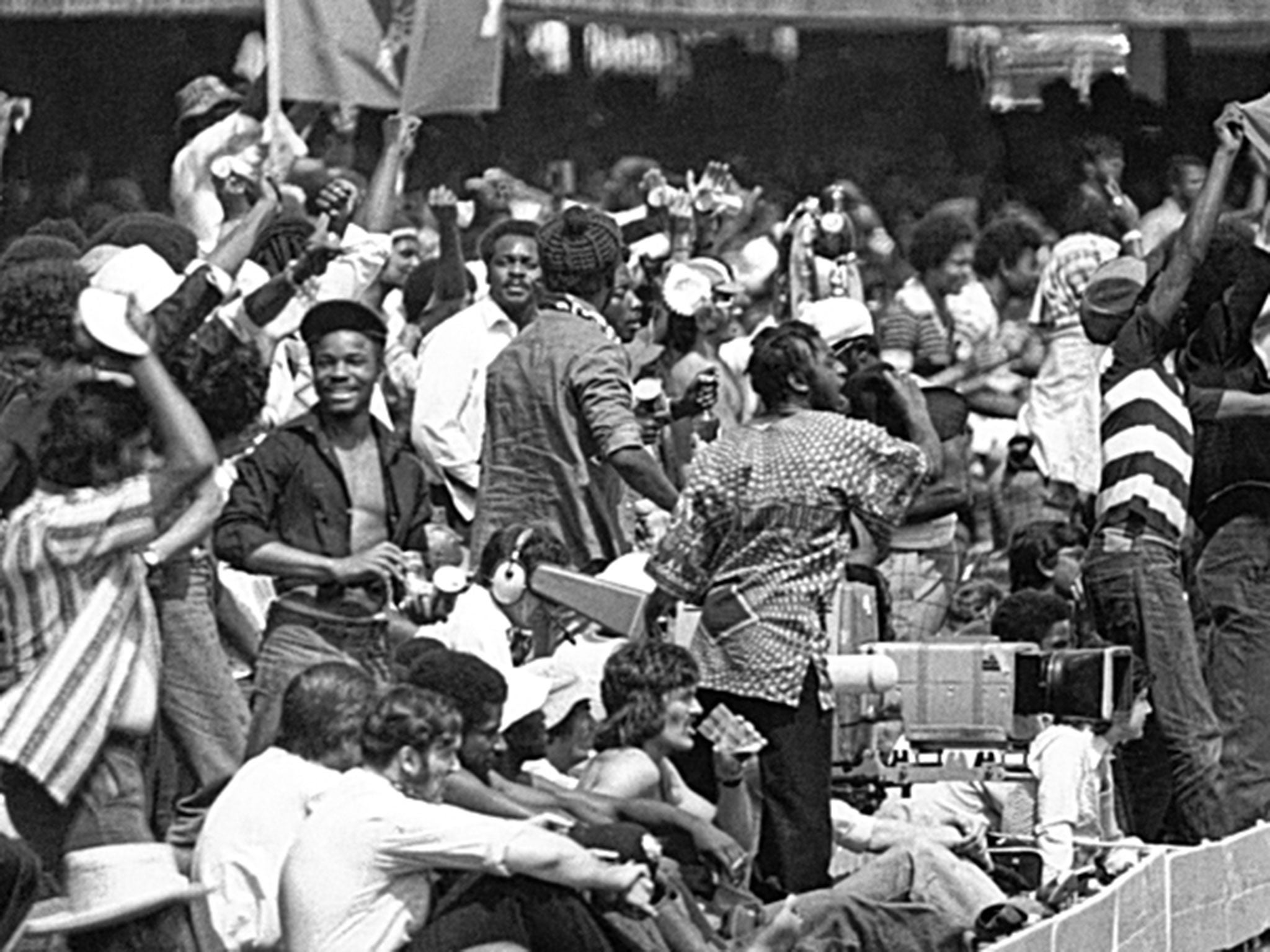When Clive Lloyd lorded it over rest of the world
Forty years ago, captain inspired West Indies to famous victory

Your support helps us to tell the story
From reproductive rights to climate change to Big Tech, The Independent is on the ground when the story is developing. Whether it's investigating the financials of Elon Musk's pro-Trump PAC or producing our latest documentary, 'The A Word', which shines a light on the American women fighting for reproductive rights, we know how important it is to parse out the facts from the messaging.
At such a critical moment in US history, we need reporters on the ground. Your donation allows us to keep sending journalists to speak to both sides of the story.
The Independent is trusted by Americans across the entire political spectrum. And unlike many other quality news outlets, we choose not to lock Americans out of our reporting and analysis with paywalls. We believe quality journalism should be available to everyone, paid for by those who can afford it.
Your support makes all the difference.On an unforgettable summer’s day at Lord’s 40 years ago, Clive Lloyd of West Indies made a scintillating 102 from 85 balls. It was the most wonderful element of a magnificent match which started at 11am and finished at 8.43pm, the sort of occasion that no one wanted to end.
The inaugural World Cup final of 1975 has never been improved on and Lloyd’s contribution as captain after his side were reduced to 50 for 3 provides an eternal reminder that the modern wizards do not have exclusive rights on rapid scoring. From the moment that Roy Fredericks, the West Indies opener, stood on his stumps after hooking Dennis Lillee for six, the match was littered with twists and turns.
Australia lost by 17 runs, unable to chase down a target of 292, still the second highest in the 11 finals so far played. It was not only Lloyd’s innings which put the match ahead of its time. Australia lost five of their wickets to run outs, three of them after lightning interventions by Viv Richards who twice hit the stumps with direct throws and also turned and threw with dead-eye dick accuracy over the stumps from mid-wicket to effect the other dismissal.
Past deeds do not often form part of the lexicon of the contemporary cricketer but if West Indies are not inspired by the 40th anniversary of the first final then they may be beyond inspiration. They begin their attempt to win the competition for the third time with a match tonight against Ireland in Nelson.
West Indies’ batting ought to be too much for Ireland’s brittle bowling attack but it would not be a total surprise if Ireland won. In 1975 it would have been unthinkable.
The final took place on the longest day. It had already been a stirring event, played over 15 short, sharp alluring days. Saturday, 21 June was a perfect English summer’s day, the sort that is unrivalled anywhere. Australia, beaten by West Indies earlier in the tournament when batting first, opted to field on winning the toss. Lillee’s feared opening partnership with Jeff Thomson was temporarily abandoned and he shared the new ball with Gary Gilmour.
Lillee, Thomson and Gilmour each had a wicket by the time Lloyd (pictured) came in to join Gordon Greenidge.
Dropped low down at mid-wicket, Lloyd was otherwise faultless, cutting and driving with a certainty and fearlessness every bit the match of the modernist. He was a true pioneer. He wore a maroon West Indian cap above a bespectacled, stooped frame.
When he was out, caught down the leg side, he had scored 102 from 149 made while he was at the crease. Replays showed that he was barely within a bat’s width of the ball. Heaven knows what damage might have ensued had he had recourse to DRS. Almost 1400 hundreds have been scored now in one-day internationals and it remains in the top 15 per cent of the fastest.
The eventual total, although scored from 60 overs then deemed the appropriate number for ODIs, seemed enough, though it had been beaten four times in that tournament. Australia were victims of the need to get on with it. Lloyd said later he knew they were poor runners between the wickets.
Richards swooped like a panther. He ran out Alan Turner with a direct underarm hit from cover, from point with one stump to aim at sent back Greg Chappell and then with Ian Chappell in a fug of uncertainty over whether to take a third run, sprinted, turned and threw in one seemingly seamless movement and delivered the ball perfectly for his captain to remove the bails. There was to be a lively flourish from the Australia tail – Lillee and Thomson – which kept the crowd captivated until the end.
Supporters, partisan and neutral, swarmed on to the pitch before, a few minutes later, the Duke of Edinburgh presented the trophy.
Join our commenting forum
Join thought-provoking conversations, follow other Independent readers and see their replies
Comments